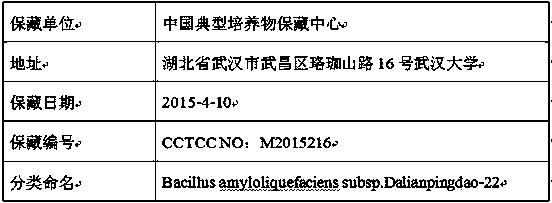Method for culturing biofloc and method for applying biofloc to aquaculture
A technology of biological flocculation and cultivation methods, applied in the directions of microorganism-based methods, biochemical equipment and methods, biological water/sewage treatment, etc. The effect of reducing carbon source cost and bait cost
- Summary
- Abstract
- Description
- Claims
- Application Information
AI Technical Summary
Problems solved by technology
Method used
Image
Examples
Embodiment 1
[0022] A method for cultivating bioflocs, comprising the steps of:
[0023] 1) Select the dried wheat straw, crush the straw with a pulverizer, and then screen it with a 20-mesh screen to obtain straw particles with a particle size of less than 0.1mm;
[0024] 2) Mix the above-mentioned straw granules with cornstarch and water evenly according to the mass ratio of 10:0.5:1.5, and extrude the mixture with an extrusion extruder, control the temperature of the extrusion cavity of the extrusion extruder at 120°C, and The pulverizer crushes the expanded mixture particles into solid particles with a particle size of 0.5 mm;
[0025] 3) Mix the above-mentioned solid particles and culture water in the culture unit according to the volume ratio of 1.1:1, and then add the bacillus named Dalianpingdao-22 and the preservation number CCTCCM2015216 into the culture unit, so that the bacillus in the culture unit The number of live bacteria is 3×10 10 cfu / L, maintain the dissolved oxygen in...
Embodiment 2
[0030] A method for cultivating bioflocs, comprising the steps of:
[0031] 1) Choose the rice straw that has been dried in the sun, crush the straw with a pulverizer, and then screen it with a 20-mesh screen to obtain straw particles with a particle size of less than 0.1mm;
[0032] 2) Mix the above-mentioned straw granules with cornstarch and water evenly according to the mass ratio of 9:0.5:1.5, and use an extruder to puff the mixture. The pulverizer crushes the expanded mixture particles into solid particles with a particle size of 0.45mm;
[0033] 3) Mix the above-mentioned solid particles and culture water in the culture unit according to the volume ratio of 1:1, and then add the bacillus named Dalianpingdao-22 and the preservation number CCTCCM2015216 into the culture unit, so that the bacillus in the culture unit The number of live bacteria is 2×10 10 cfu / L, maintain the dissolved oxygen in the water in the culture unit at 6~8mg / L, and collect bioflocs when the total...
Embodiment 3
[0038] A method for cultivating bioflocs, comprising the steps of:
[0039] 1) Choose corn stalks that have been dried in the sun, crush the stalks with a pulverizer, and then screen them with a 20-mesh sieve to obtain straw particles with a particle size of less than 0.1mm;
[0040] 2) Mix the above-mentioned straw granules with cornstarch and water evenly according to the mass ratio of 11:0.5:1.5, and extrude the mixture with an extrusion extruder, control the temperature of the extrusion cavity of the extrusion extruder at 130°C, and then The pulverizer crushes the expanded mixture particles into solid particles with a particle size of 0.55mm;
[0041] 3) Mix the above-mentioned solid particles and aquaculture water in the culture unit according to the volume ratio of 1.2:1, and then add the bacillus named Dalianpingdao-22 and the preservation number CCTCCM2015216 into the culture unit, so that the bacillus in the culture unit The number of live bacteria is 5×10 10 cfu / L,...
PUM
| Property | Measurement | Unit |
|---|---|---|
| Particle size | aaaaa | aaaaa |
| Particle size | aaaaa | aaaaa |
| Particle size | aaaaa | aaaaa |
Abstract
Description
Claims
Application Information
 Login to View More
Login to View More - R&D
- Intellectual Property
- Life Sciences
- Materials
- Tech Scout
- Unparalleled Data Quality
- Higher Quality Content
- 60% Fewer Hallucinations
Browse by: Latest US Patents, China's latest patents, Technical Efficacy Thesaurus, Application Domain, Technology Topic, Popular Technical Reports.
© 2025 PatSnap. All rights reserved.Legal|Privacy policy|Modern Slavery Act Transparency Statement|Sitemap|About US| Contact US: help@patsnap.com

